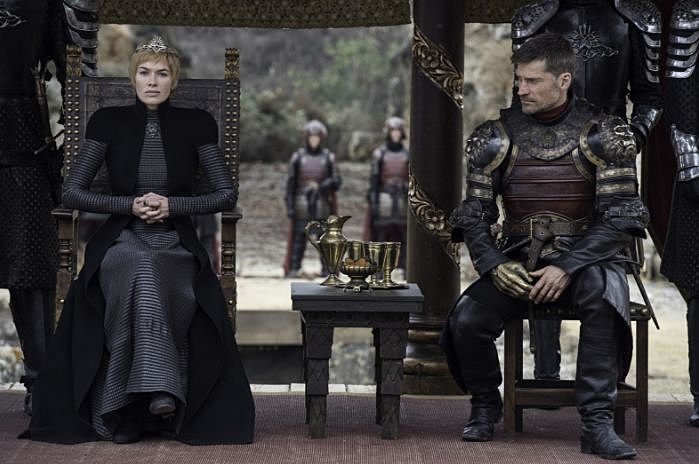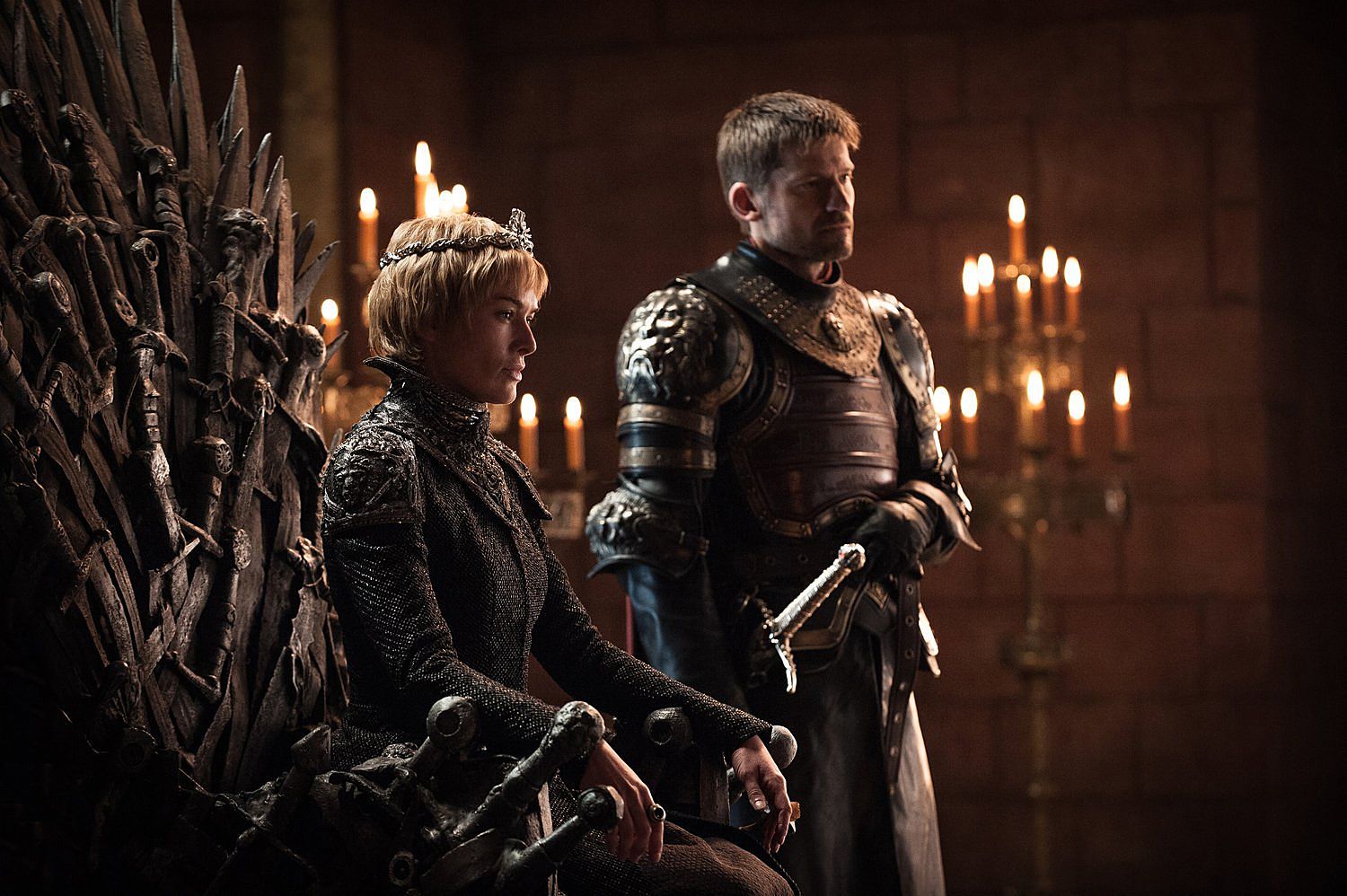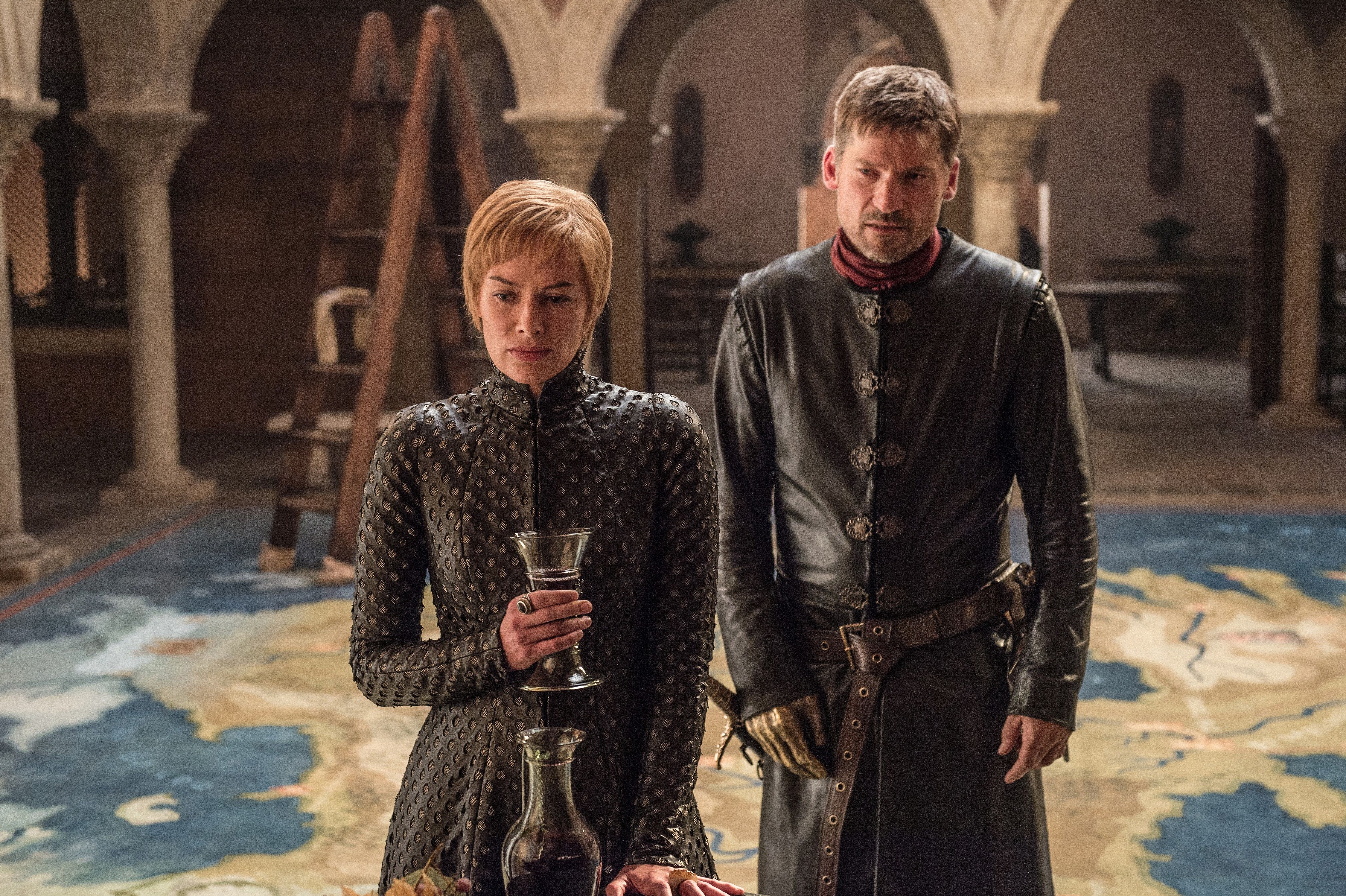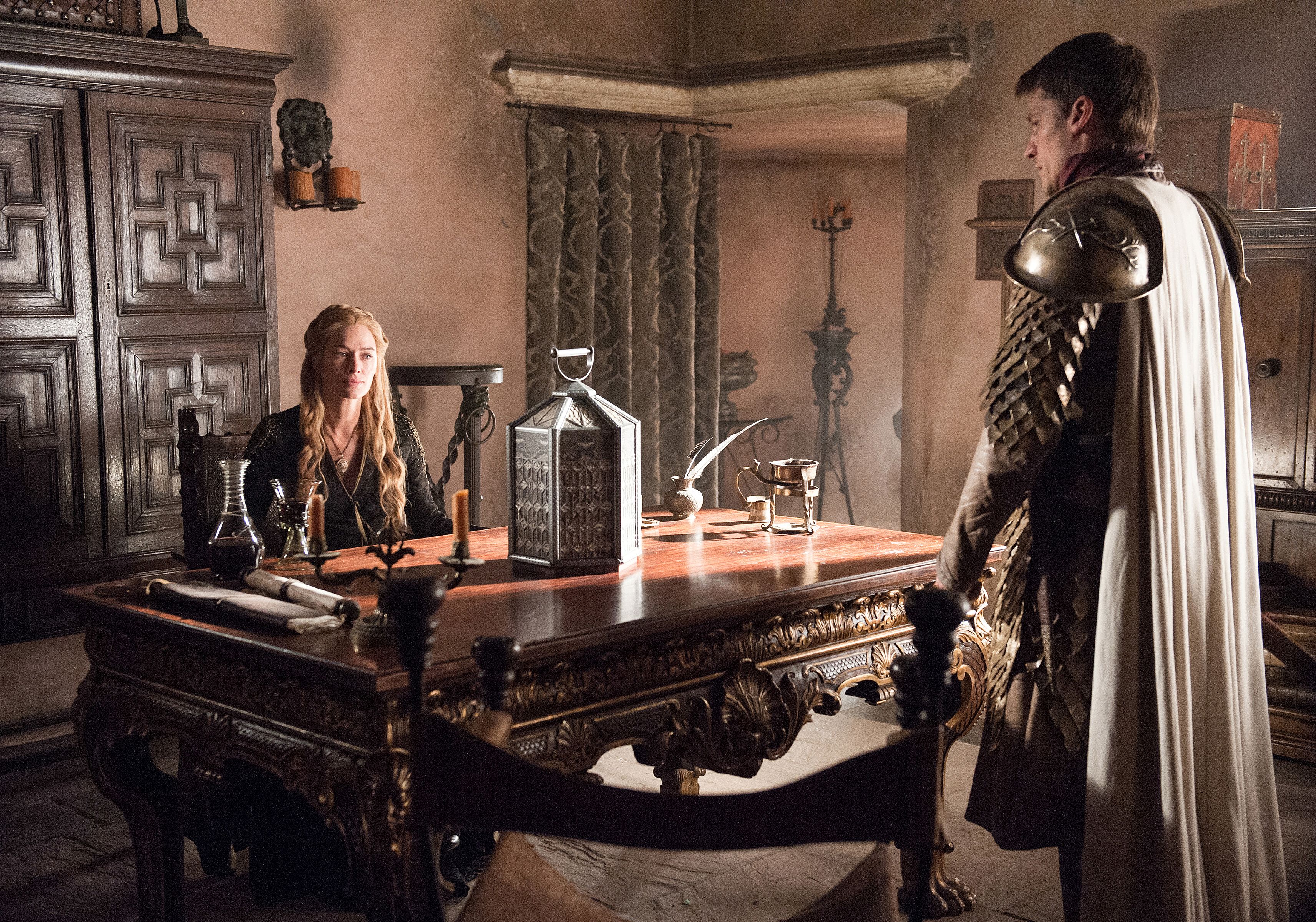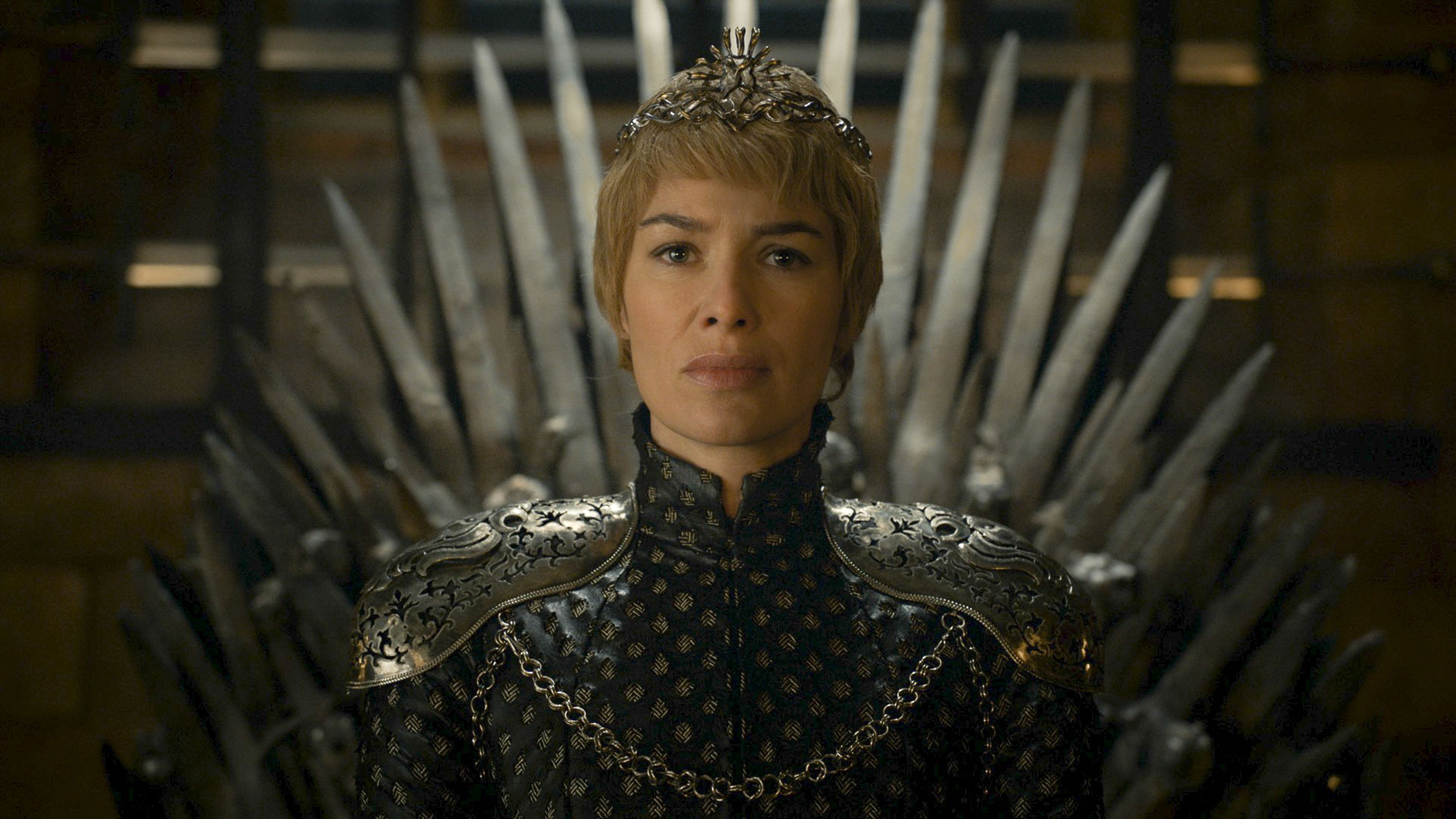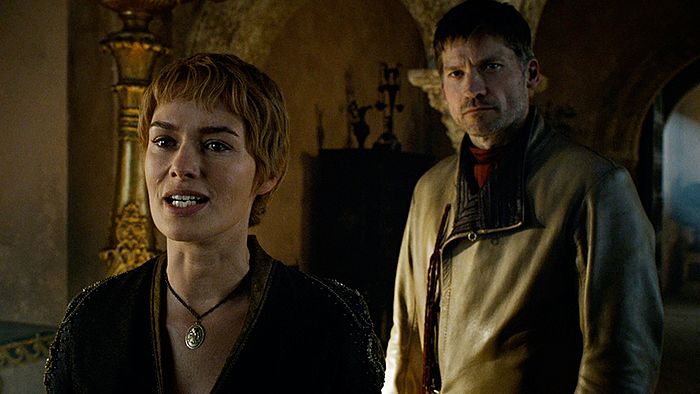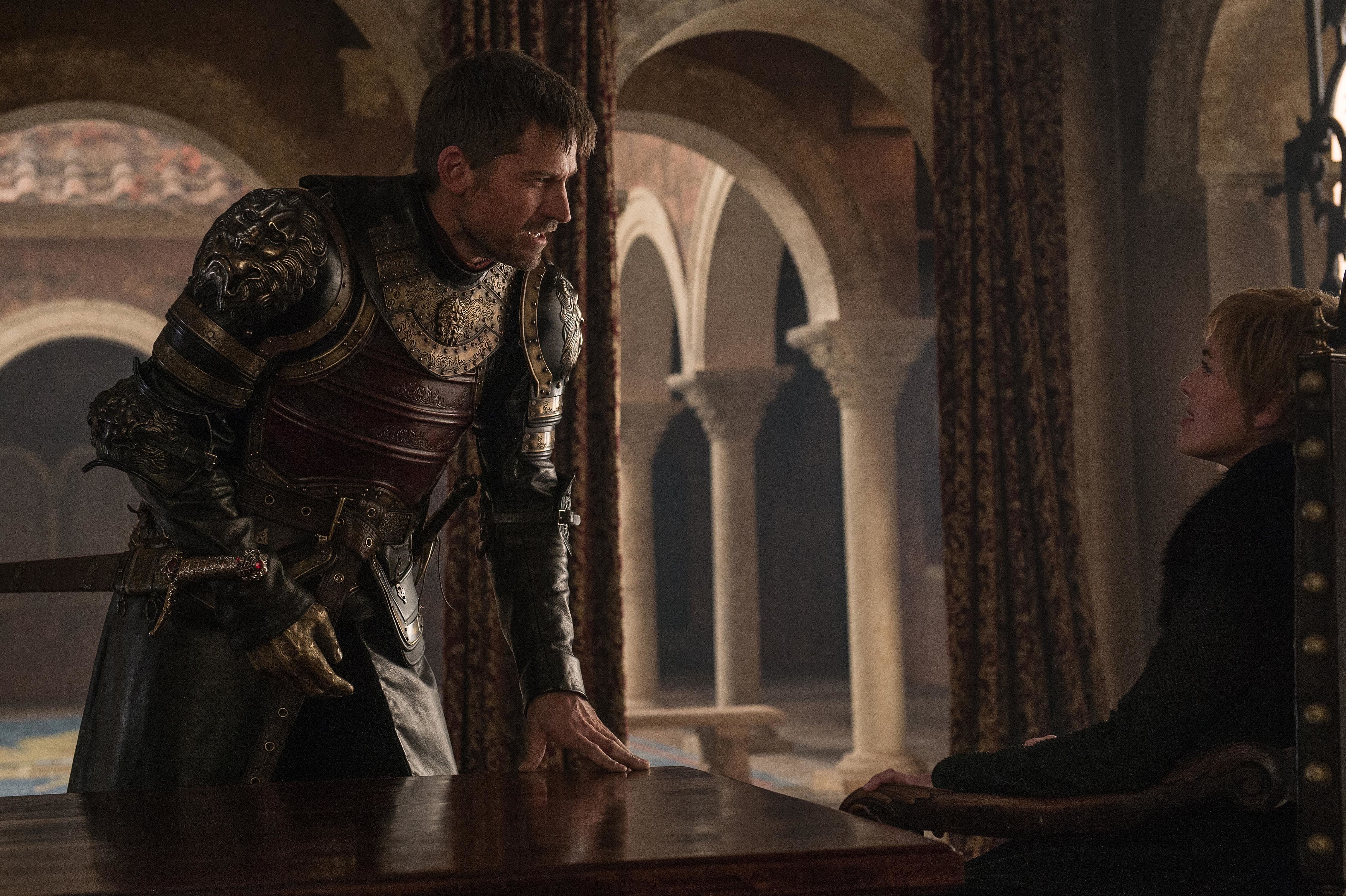Twins, with their shared conception, co-development in the womb and apparent metaphysical connection throughout life, have long fascinated humankind. It’s no surprise that twins show up in many world mythologies. Here, we’re going to look at how this legacy is reflected in the complex and ever-evolving relationship between Cersei and Jaime Lannister, the most famous fraternal (dizygotic) twins in Westeros. We’ll also see, based on what we discover in the folklore George R.R. Martin knows so well, if we can divine how their twisted journey might end.
THE NATURE OF THE TWIN
Many cultures see twins as an expression of the dualistic nature of the universe, and this can cause trepidation. Some traditions celebrate the arrival of twins as a portent of good things. In Greek mythology, twins were sometimes the product of a mortal woman sleeping with a god and a mortal man within the span of a day. The result was one child born with superhuman qualities and one without, such as the mighty hero Heracles and his maternal half-twin brother Iphicles. Cersei and Jame, on the other hand, are not supernaturally enhanced, the product of politically powerful but normal parents, Tywin and Joanna Lannister.
As twins mature, they tend to develop strong feelings towards one another; they can become everything from intimate allies to respectful rivals to brutal enemies. Let’s take a look at some twin archetypes, such as Balanced, the “One,” Soul Mates, Conflict, the Evil Twin — and explore how the relationship between Cersei and Jaime reflects a set of these shifting dynamics.
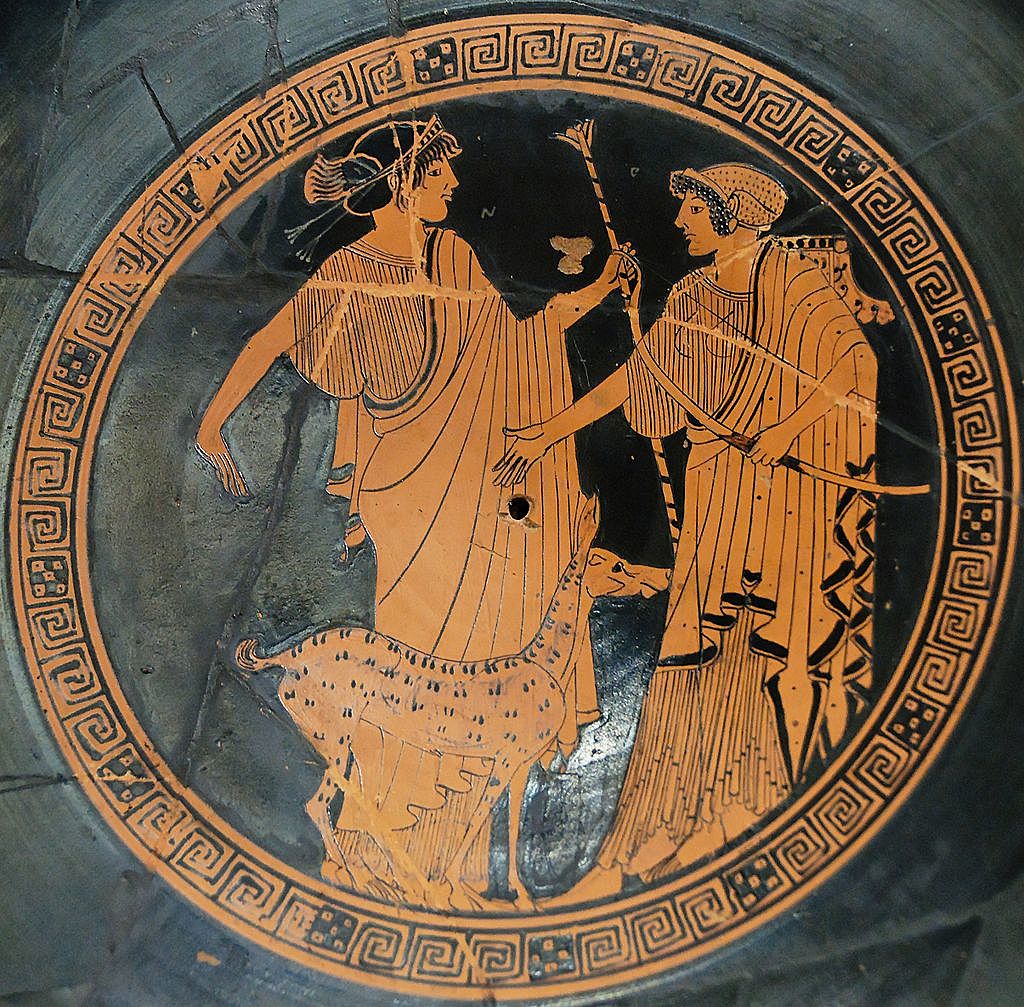
Apollo (left) and Artemis (right). Brygos (potter, signed), Briseis Painter, Tondo of an Attic red-figure cup, ca. 470 BC, Louvre.
THE DUALISTIC NATURE OF THE UNIVERSE: TWINS IN BALANCE
Twins in mythology are often cast as two halves of the same whole. Their function is complimentary — Yin and Yang — rather than conflicting. Think of life and death, night and day, darkness and light and fire and water. This balancing idea can be found everywhere in myth, such as with the Greek gods Apollo and Artemis, who represent the sun and moon respectively.
In one version of the ancient Egyptian creation myth, the Earth god Geb and the sky goddess Nut are twins. The two are romantically involved. In fact, they’re so close that the powerful god Ra feels he must separate them, and raises Nut to form the heavens over Geb. Together, the two gods, Earth and sky, compose two halves of in perfect whole. And in Mayan mythology, the ancient Hero Twins Hunaphu and Xblanque are a complementary pairs, and Mayan rulers made sure to be able to trace their ancestry back to them.
In the opening season of Game of Thrones, Cersei and Jaime are involved in an incestuous relationship and acting as a nefarious team. They don’t function as a balancing pair, since both begin life on the show as royal players with matching motivations, including listlessness, bitter self-gratification and self-pity. Cersei, who was born first, is a shade darker and more dominant. They appear to be matching halves of the same whole, with little daylight between them. Based on this early dynamic, they basically fit into the archetype of the twins as “One,” but only superficially. As we’ll see, there’s more to their story.
THE DUALISTIC NATURE OF THE UNIVERSE: THE TWINS AS ONE
There is no doubt that Jaime and Cersei see themselves as one unit, at least in the early going. As Cersei tells Eddard Stark: “Jaime and I are more than brother and sister. We shared a womb, came into this world together. We belong together” (“You Win or You Die,” S1/Ep7).
The idea of twins acting as a single entity pops up in East Indian mythology. The Hindu Ashvins, male twins with the heads of horses, ride together in a golden chariot and shine with the light of sunset and sunrise. (Twin horse riders are found in many cultures, such as the English fighters Hengist and Horsa). The Ashvins also have older siblings, the fraternal twins Yama (the god of death, a man) and Yamuni (the god of life, a woman). These two represent the balanced twin dynamic.
A more modern take on the “One” twin myth can be found in the characters of Luke and Leia in Star Wars. Though separated at birth (a common theme with mythical twins; see Romulus and Remus below), brother and sister Skywalker both possess supernatural powers and are consistent forces for good.
TWINS IN SYNC: SOUL MATES
As Game of Thrones has gone on, the nature of Cersei and Jaime Lannister’s relationship has changed. In the first episode, we see Jaime try to murder a child, Brandon Stark, to protect the secrecy of his incestuous relationship with his twin sister. Later, the deaths of their family members bring them closer together temporarily, although by that point they are both undergoing changes that will eventually divide them.
At the start of season 6, with their father and two of their children dead, they come as close as they ever will to becoming true soul mates. After Jaime has brought Myrcella’s body home from Dorne, Cersei seems to be falling apart, referring to the old prophesy of the woods witch Maggy the Frog, who predicted, among other things, the premature deaths of her children. In agony and surrounded by enemies, Jaime seeks salvation inside their exclusive biological and metaphysical club: “Fuck prophesy. Fuck fate. Fuck everyone who isn’t us. We’re the only ones who matter, the only ones in this world” (“The Red Woman,” S6/Ep1).
Intensely paired twins include the ancient Greek Castor and Pollux, also known as the Dioscuri. They were half-brothers, born of the same mother (Leda), but Castor was the mortal son of the King of Sparta while Pollux was fathered by the mighty king of the gods, Zeus. The brothers were so close that when Castor was killed, Pollux gave up his immortality so that Zeus could find a way to keep them together. Zeus turned the brothers into the constellation known as Gemini. The twin brothers remain inseparable even in death.
Another famous soul mate tandem is found in the Epic of Gilgamesh. The cruel, “civilized” demigod King Gilgamesh is out of control, so the god Anu creates the primitive wildman Enkidu as a brotherly counterbalance to him. After an initial round of conflict, Gilgamesh and Enkidu become inseparable, and go on adventures together. They are different but complimentary. This is in contrast to what happens on Game of Thrones, where the more different Jaime becomes from Cersei, the more it drives them apart.
At their most desperate and downtrodden, Jaime and Cersei find strength in the depth of their twin connection. But it’s complicated. While we have no doubt that Jaime, if a Greek god, might act as Pollux and relinquish his immortality to save Cersei, we’re not sure she loves him enough to return the favor should their positions be reversed. Despite all their similarities and shared history, even the love-blind Jaime senses early on the fundamental differences between them. “You’re a hateful woman. Why have the gods condemned me to love a hateful woman?” Jaime to Cersei (“Breaker of Chains,” S4/Ep3)
By the end of season 7, we suspect their twin connection was never mutual enough to last, as they drift further and further apart. Jaime has moved towards the light as Cersei has embraced the darkness. Neither can now accept what the other has become. The alliance they had at the start of the show, which seemed so absolute and intimate, has now proved to have been something of an illusion, neither the eternal, inviolate familial bond of Geb and Nut nor the complimentary bond between Gilgamesh and Enkidu.
Cersei and Jaime’s love was never shared equally, and their connection has not survived the trials of misfortune, evolution and ambition. The Lannister twins are not mythical beings; they are all too human, made of flesh and blood, laced with mankind’s frailties and flaws, and their pairing has never been a truly happy one.
TWINS IN CONFLICT: THE EVIL TWIN
In many cultures, twins represent opposing forces of good and evil. Remember the complimentary relationship between the twin Egyptian gods Geb and Nut? There’s also Osiris and Set, their twin sons. Set was so obsessed with being the firstborn that he ripped a hole in his mother’s womb. Set is the dark brother, lord of the red desert, and he eventually murders and dismembers his good brother Osiris. The evil Persian spirit Ahriman also forced his way out of the womb first, beginning his lifelong battle with his good twin, Ahura. Many of these “evil twins” seem preoccupied with being born first. Interestingly, Cersei Lannister is firstborn.
By the end of Game of Thrones season 7, Cersei and Jaime have undergone profound changes, and their once-tight bond has frayed to the point of splitting. Jaime has struggled to become a better man, while Cersei has followed her instincts and embraced a Machiavellian point of view where all means justify the ends.
The turning point in the twins’ relationship occurs when Jaime returns home to King’s Landing in “The Winds of Winter” (S6/Ep10) soon after his sister has blown up the Sept of Baelor with wildfire, along with everyone inside. Essentially, Cersei has committed the same act of mass murder Jaime killed the Mad King to prevent 17 years before. When Jaime watches Cersei crowned as the Queen of the Seven Kingdoms, he knows things cannot go back to the way they were.
Jaime’s horror in seeing what Cersei has become recalls the hero Beowulf from the epic poem of the same name. Beowulf has no biological twin, but the poet’s language reinforces the idea that the three monsters he faces — Grendel, Grendel’s mother and the dragon — are reflections of his own dark side, striking back at him. Jaime was once a man who could push a child out of a window and not lose sleep over it, but he has changed and Cersei has not. Now he faces her as he faces his own monstrous reflection, however far he’s come.
Still, Jaime tries to stand by his sister, but Cersei is done with any pretense of honor or mercy. Her disdain for her younger twin becomes dangerous when, in the season 7 finale, “The Dragon and the Wolf” (S7/Ep7), she mocks Jaime as he prepares to keep his word to march north and reinforce the Targaryens and Starks in their fight against the White Walkers. “I always knew you were the stupidest Lannister,” Cersei says. While Jaime stands by his promise, Cersei explains how she plans to ignore the deal and take back the parts of Westeros she has lost with the help of the Iron Bank, Euron Greyjoy and the Golden Company.
Jaime: “I pledged to ride north. I intend to honor that pledge.”
Cersei: “Then that will be treason.”
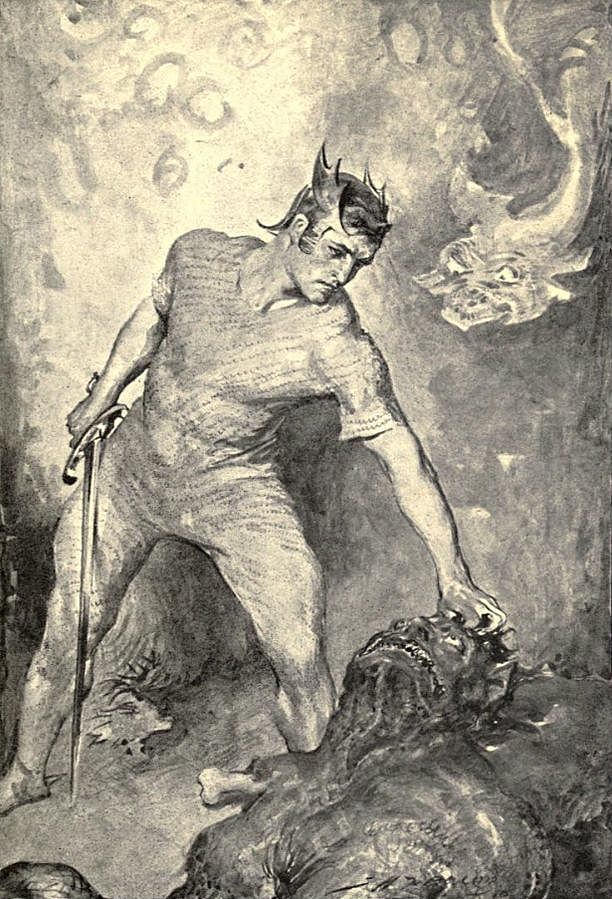
Beowulf Decapitates Grendel, Illustration for Myths and Legends of the British Race, 1910, John Henry Frederick Bacon
When Jaime moves to leave, the Mountain blocks his way. The moment lays bare what has been true all along: that Cersei has always felt herself to be the stronger sibling, and Jaime the weaker. She, not he, gets to decide if he can leave. “Are you going to order him to kill me?” Jaime asks. Stunned, he appeals to their twin bond. “I’m the only one you have left. Our children are gone. Our father is gone. It’s just me and you now.” Unmoved, Cersei appears as if she’s willing to go through with her brother’s execution, but although his faith in their connection is shattered, Jaime correctly intuits that she won’t do it. “I don’t believe you,” he says. Cersei allows Jaime to depart. She’s obviously shaken by the experience, but at this point, these two are more enemies than friends.
Actor Nikolaj Coster-Waldau put it this way on HBO’s Making of Game of Thrones blog:
She seems more or less willing to kill him, and he finally realizes that whatever he feels for her, it doesn’t go both ways. That whole thing of ‘we’re in this together,’ well, we’re not quite in this together — because you’re not. We’re not playing the same game.
This brings to mind the ancient story of Romulus and Remus, twin brothers said to have founded the city of Rome and therefore the great Roman empire. Abandoned in the wilderness as babies, the brothers were suckled by a she-wolf and survived to adulthood. Though the brothers began as faithful allies, an eventual argument over the location of their new city resulted in Romulus murdering Remus and becoming Rome’s first king.
IN CONCLUSION
Season 7 ended with Cersei and Jaime in a state of perilous conflict. Their bond seems severed, perhaps beyond repair. Jaime may always love his sister, but he can never trust her again. When the series began, we saw adversity and misfortune bring Jaime and Cersei closer together. At one point, they seemed to be forging a new life as inseparable partners, like Castor and Pollux. But the power of the connection wasn’t as solid as it seemed. Jaime is constantly seeking a deeper connection with Cersei, but she is never as attached to him as he is to her. While adversity inspired Jaime to reach out to Cersei, it only caused her to sink deeper into her inner darkness. They are not Nut and Geb. They are Romulus and Remus.
It’s very possible these two will come to blows in the final episodes. One may even kill the other, as with Romulus and Remus. As for who will kill whom, that remains to be seen.
To stay up to date on everything Game of Thrones, follow our all-encompassing Facebook page and sign up for our exclusive newsletter.
Watch Game of Thrones for FREE with a no-risk, 7-day free trial of Amazon Channels





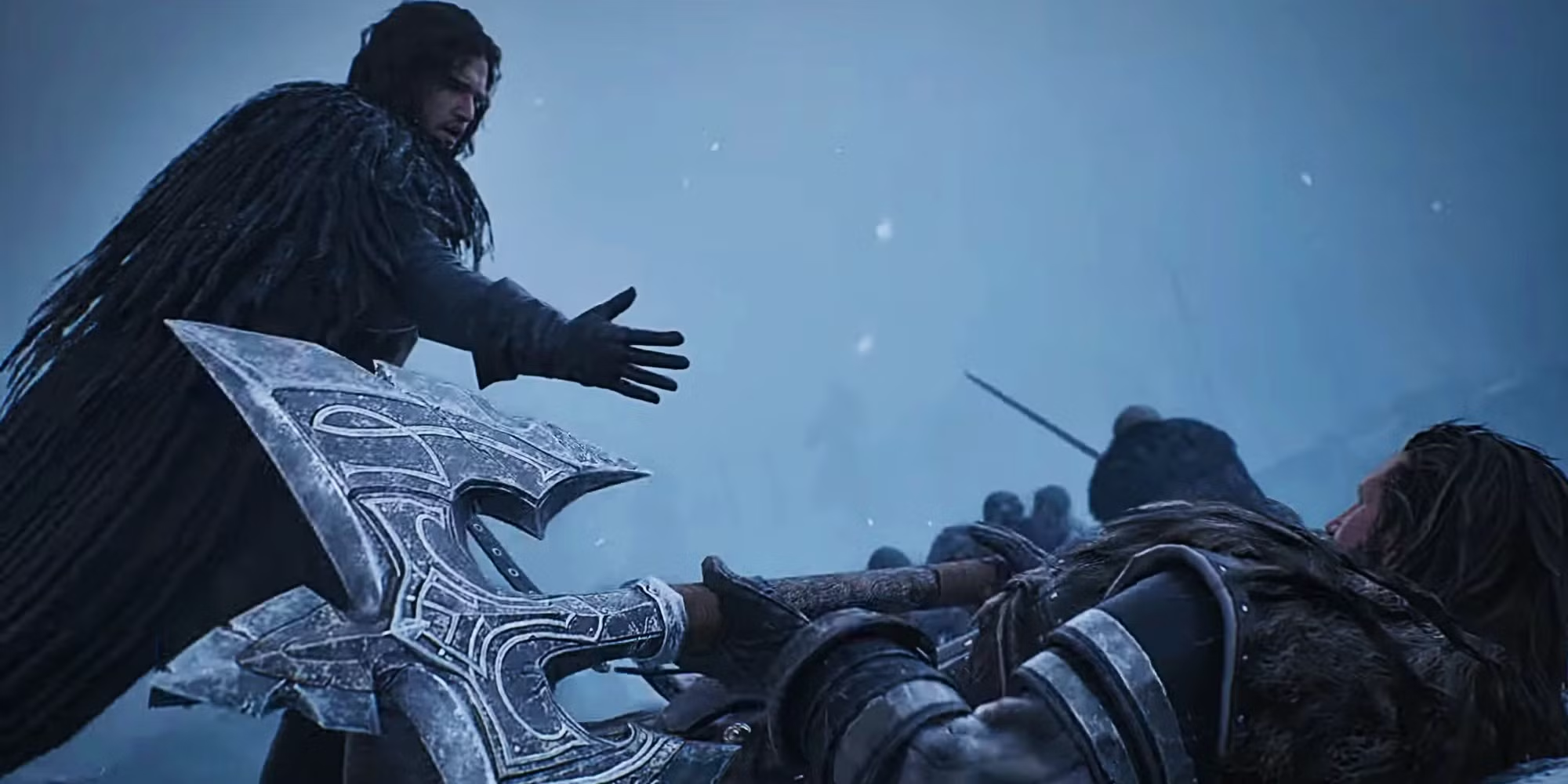














![[Book Review] The Blade Itself (The First Law Trilogy) by Joe Abercrombie](https://bendthekneegot.com/wp-content/uploads/2018/01/1516047103_maxresdefault-218x150.jpg)







